

 |
 |
 |
 |
 |
 |
In Jan 1998, The Canadian Minister of National Defense, Art Eggleton, announced that the Westland/Agusta consortium (E.H.Industries) had been selected to supply 15 AW520 Cormorant search and rescue (SAR) helicopters to the Canadian Forces at a maximum project cost of $790 million. The total project budget includes a max of $593 million to E.H. Industries; plus approximately $200 million in Government costs for project management, training, spare parts, integrated logistic support, and a small contingency allowance.The Westland-Augusta (E.H.Industries)beat out three other bids, they were the Chinook 'd' model, (Boeing), the Black Hawk derivitive (aka Maplehawk) from Sikorsky, and the Cougar mk2 from Eurocopter.
Following the cancellation of the first EH-101 contract, the Canadian Forces reviewed its SAR helicopter requirements, based on an operational research study carried out in 1990, to ensure they were at the essential minimum to save costs.This review resulted in a 15% reduction of the operational requirements that were set out for the cancelled New Shipborne Helicopter (NSH) project. Any further reduction, it was felt, would compromise the ability to perform the Canadian SAR role. Range and cruise speed were reduced ( to 500 from 550 nautical miles, and 120+ from 160+ knots respectively) and hover rescue altitude was reduced from 7500 feet above sea level down to 6000 feet ASL.
Thus the requirement was for a helicopter with a range of at least 500 nautical miles, a cruise speed of at least 120 knots (only slightly faster than the lab), some ability to recover from an engine failure at most points of flight, to hover at 6000 feet above sea level, and to fly in light icing conditions. The cabin had to be big enough to accomodate five aircrew and 10 passengers/survivors plus equipment to enable search and rescue technicians to conduct life-saving tasks and missions.
The following chart compares selected performance specifications of the Labrador and the Cormorant against the Canadian SAR helicopter performance requirements.This information is for comparison under set weight and atmospheric conditions and may not reflect maximum capabilities.
| performance category | Labrador | CSH Specs | Cormorant |
|---|---|---|---|
| Range | 500nm | 500 nm | 530 nm |
| cruise speed (at gross weight) | 105knts | 120knts | 145knts |
| one engine fail performance | safe recovery only at cruise | safe recovery in most points of flight | safe recovery any point in flight |
| hover rescue altitude (ASL) | 5,000 feet ASL | 6,000 feet ASL | 8,000feet ASL |
| Gross weight | 21,400 lbs | not specified | 32,200 lbs |
| Engines | 2xT58 GE 8F | not specified | 3xGE T700-T6A1 turbines |
| flight in icing | PROHIBITED | permitted in light icing | permitted in light icing |
| cabin size | 810 cu ft | at least 352 cu ft | 975 cu ft |
| rear ramp | provided | optional | provided |
| auto-pilot | not provided | mandatory | provided |
| auto-hover | not provided | optional | provided |
| EFIS (glass cockpit) | not provided | optional | provided |
So here we are almost two years later and things are slowly coming together..EHI are on time with the constuction and airframes 14901, 02 and 03 are now all in various stages of development. The training and sheduling are still abit fuzzy but hopefully course dates etc are forth coming shortly. To view 14901 on the factory floor just clic on the thumbnail.
 |
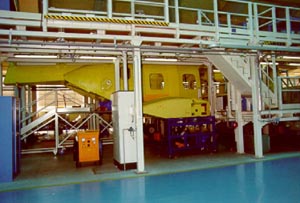 |
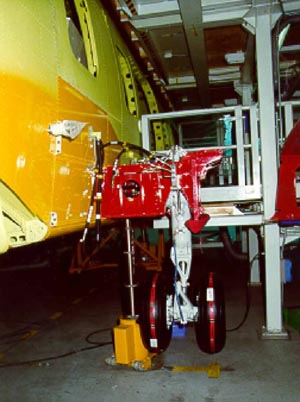 |
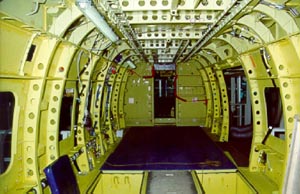 |
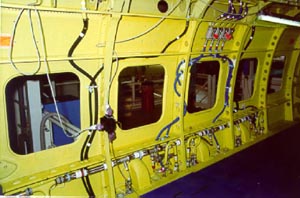 |
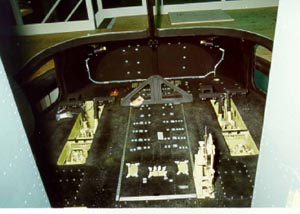 |